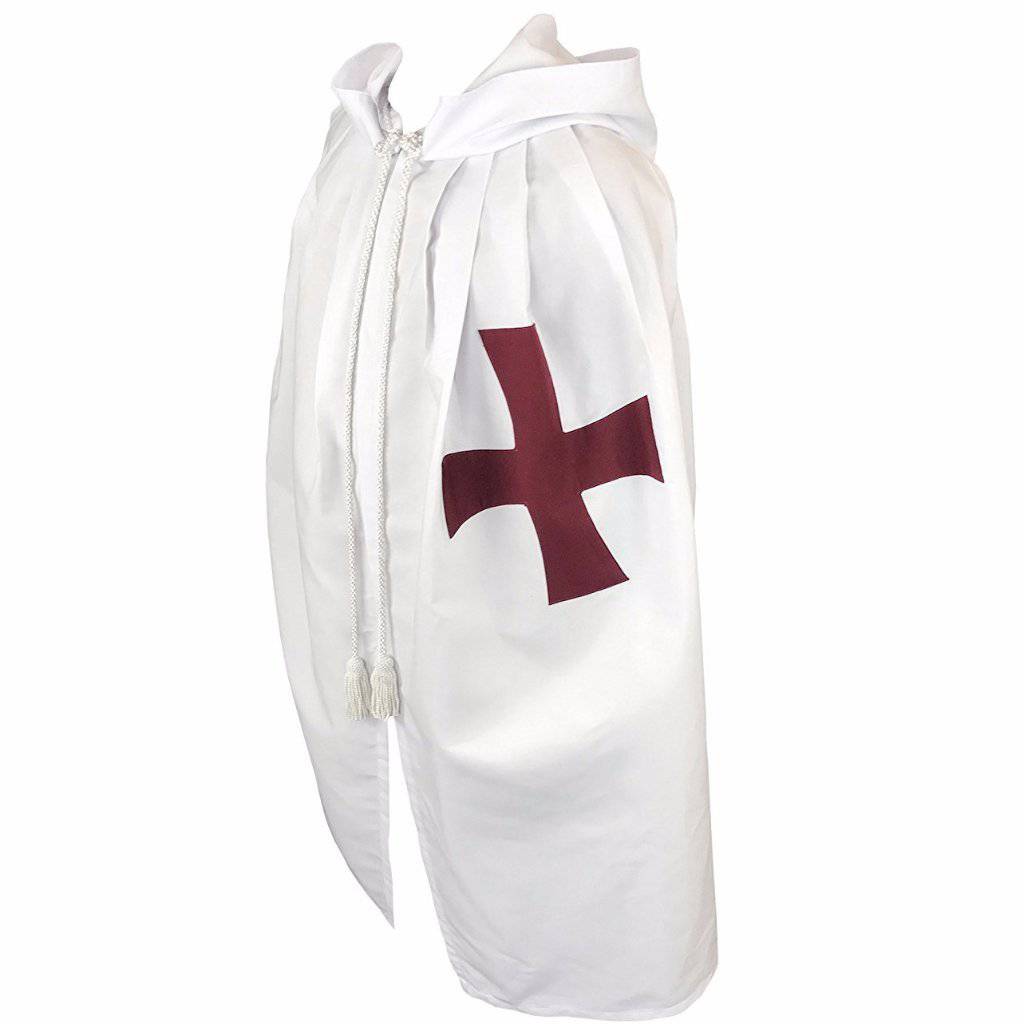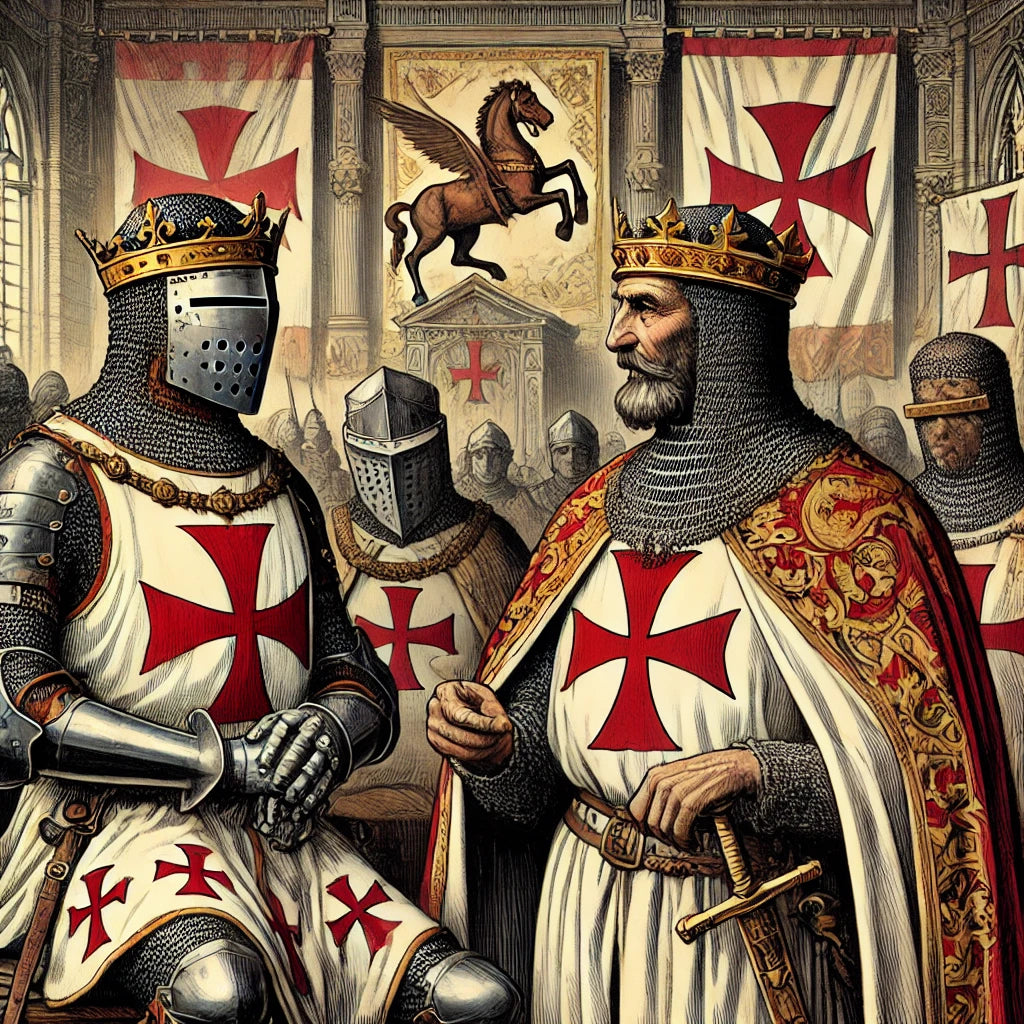The Knights Templar and the Catholic Church: Allies, Rivals, and the Path to Betrayal
The Knights Templar, a once-powerful Catholic military order, are most commonly associated with the defense of the Holy Land and their role in the Crusades. However, their story is much more complex, marked by a deeply intertwined relationship with the Catholic Church, which shifted from mutual support and collaboration to betrayal. This complex saga—spanning both alliances and rivalries—shaped the future of the Knights Templar, the Catholic Church, and the political landscape of medieval Europe.
The Early Alliance: Guardians of the Faith
The founding of the Knights Templar in 1119 by Hugues de Payens and a small group of knights was intended to address the growing dangers faced by Christian pilgrims journeying to the Holy Land. Their original mission was to offer protection to these pilgrims and ensure their safe passage across hostile territories. Over time, the Templars’ purpose expanded, and they became central figures in the Crusades. By 1129, Pope Innocent II officially recognized the order, bestowing upon them significant privileges that would fuel their rise to power.
Spiritual Dedication: A Monastic Military Order
The Templars were unique in that they combined religious devotion with military duty. They followed the strict Benedictine rule, which governed their behavior, focusing on chastity, poverty, and obedience. Yet, unlike typical monks, the Templars also served as warriors in the defense of Christendom. Their dual role as both religious and military figures made them an indispensable force for the Catholic Church. They were not merely protectors of the Holy Land but a symbol of 
Papal Support: Legitimacy and Expansion
The relationship between the Knights Templar and the Papal States was key to their rapid expansion. The Pope’s endorsement was crucial, not only providing the Templars with legitimacy but also ensuring they were free from interference by local ecclesiastical authorities. This direct allegiance to the Pope meant that the Templars did not have to answer to local bishops, allowing them to operate with remarkable autonomy.
In addition to this ecclesiastical support, Pope Innocent II’s Omne Datum Optimum papal bull in 1139 granted the Templars a variety of privileges, including exemption from paying taxes, protection of their property, and freedom from ecclesiastical jurisdiction. This made them immune to the typical control of local church authorities and allowed them to flourish across Europe and the Holy Land.
A Growing Power: From Protectors to Financiers
By the late 12th century, the Knights Templar had expanded far beyond their initial military role, becoming one of the wealthiest and most influential organizations in medieval Europe. While still fighting in the Crusades, the Templars developed into formidable financiers, often operating as bankers for the Catholic Church, monarchs, and European nobility.
Economic Influence: Banking and Wealth Accumulation
The Templars’ banking operations played a significant role in the development of medieval finance. They established an early form of international banking, offering loans, securing funds for monarchs, and even allowing pilgrims to deposit money at one location and withdraw it upon reaching their destination. As a result, the Templars amassed vast wealth and became a critical part of the financial landscape in Europe.
Their wealth also made them key players in the political and military spheres. They built fortresses and castles across Europe and the Holy Land, ensuring both their defense and their influence over vast territories. As the Papacy continued to rely on them for military support, their financial expertise became just as crucial in ensuring the stability of Christendom.

Strategic Fortresses: A Network of Power
The Templars’ extensive network of fortresses and castles across Europe, the Holy Land, and North Africa solidified their influence. These fortresses were not just military strongholds but centers of administration, diplomacy, and trade. Their strategic placement along trade routes and battlefronts made them valuable assets to the Catholic Church and monarchs alike, providing both defense and economic leverage.
The Strain: Political Intrigue and Rivalries
As the Templars grew in wealth and influence, their relationship with the Catholic Church began to show signs of strain. Several factors contributed to this growing tension.
Decline of the Crusades: A Changing Mission
By the late 13th century, the Templars’ original military purpose—defending Christian territories in the Holy Land—was significantly diminished following the loss of Jerusalem to Saladin in 1187. The fall of Acre in 1291, the last Crusader stronghold in the Holy Land, further marked the end of the Templars' mission in the East. With their primary military purpose waning, the Templars began to shift their focus to other concerns, raising questions about their relevance.
The Wealth Problem: Envy and Suspicions
The Templars’ wealth and their increasing independence from the Church's authority led to growing suspicion and envy. Monarchs such as King Philip IV of France, who owed large debts to the Templars, began to see them as a threat. The Church, once their protector, now found itself in a difficult position, torn between loyalty to the Templars and the pressure from secular powers to bring the order to heel.
The Betrayal: From Allegations to Suppression
In 1307, the Catholic Church was forced to betray its former allies. Under heavy pressure from King Philip IV of France, Pope Clement V reluctantly turned against the Knights Templar.
The Arrests: A Night of Betrayal
On Friday, October 13, 1307, a day forever associated with bad luck, Templar knights across France were arrested on charges of heresy, idolatry, and corruption. These charges, widely believed to be fabricated, were used as a pretext to strip the Templars of their wealth and power. The arrest order came directly from King Philip IV, who sought to seize the Templars’ assets to cover his debts.

Papal Complicity: The Reluctant Pope
Pope Clement V complied with Philip IV’s demands, initiating investigations and trials. Despite numerous confessions being extracted under torture, there was no solid evidence to support the charges. In 1312, the Pope issued the Vox in excelso bull, formally disbanding the Knights Templar.

The Execution of Jacques de Molay
The last Grand Master of the Knights Templar, Jacques de Molay, was executed in 1314, burned at the stake on the orders of King Philip IV. This brutal act marked the official end of the Knights Templar and was a symbol of the ultimate betrayal by both the Catholic Church and secular monarchs.
Legacy: Enduring Mystique and Controversy
The Templars’ suppression remains one of the most controversial and debated events in medieval history. Many historians argue that the Templars were victims of political manipulation, targeted for their wealth and influence.
A Legacy of Mystery: Hidden Treasures and Secret Rites
Even after their fall, legends about the Templars have continued to capture the imagination. Myths about hidden treasures, the Holy Grail, and secret rites associated with the order continue to fuel conspiracy theories and intrigue.
Enduring Inspiration
Despite their betrayal, the Knights Templar’s ideals of loyalty, honor, and faith continue to inspire individuals and organizations worldwide. Their story has become a symbol of the medieval chivalric code and remains a powerful cultural touchstone.
Conclusion: The Church’s Role in the Templars' Betrayal
The Catholic Church’s involvement in the suppression of the Knights Templar remains a complex mix of political maneuvering, institutional self-preservation, and reluctant betrayal. The story of the Templars serves as a poignant reminder of the tension between faith and power, loyalty and betrayal, and the dangers of unchecked ambition. The legacy of the Knights Templar continues to captivate the imagination, both as a historical tragedy and as a symbol of the complexities of medieval politics and religion.









